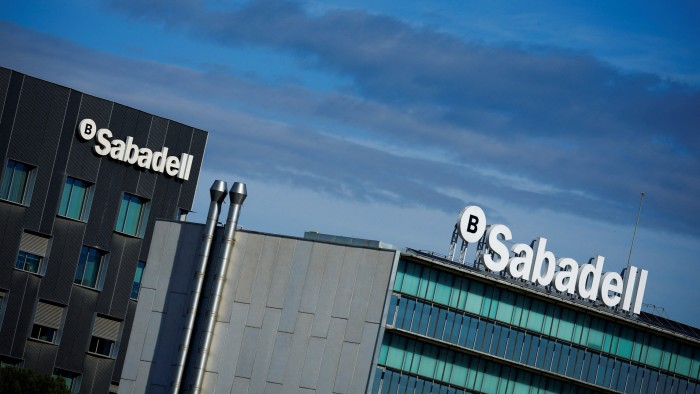Unlock the Editor’s Digest for free
Roula Khalaf, Editor of the FT, selects her favourite stories in this weekly newsletter.
Everyone seems to want more mergers among European banks — except for their own shareholders.
Italian lender BPER’s bid for Banca Popolare Di Sondrio last week takes the number of live, multibillion-euro hostile bank bids to four. In every case, the target is trading above the bid price, suggesting investors are holding out for better offers.
The logic for consolidation is straightforward: Europe doesn’t have enough banks with the scale to compete with the US and facilitate investment in essential projects such as the climate transition. Bidders have been emboldened by the support of figures such as the former European Central Bank chief Mario Draghi, who wants more European champions.
Crunching banks from different countries together is tricky because of regulation, but that doesn’t explain these targets’ resistance. UniCredit’s attempt to buy Banco BPM, Monte dei Paschi di Siena’s bid for Mediobanca and BBVA’s self-described “knockout” bid for Sabadell are all domestic combinations. Those ought to be easier: slash costs by shutting branches and combining technology systems, and maybe even get some extra revenue through cross-selling.

It’s a good pitch, but the reality isn’t so straightforward. Research by the ECB found that on average mergers in the Eurozone had a “moderately positive” impact on profitability, but the wide variance in results highlights that tie-ups sometimes fall short in practice.
Moreover, the ECB said deals were most likely to work when the acquiree was in a bad state. That’s partly why a few years ago, after years of negative interest rates, Sabadell was the one seeking a merger with BBVA.
However, the rising tide that lifted big banks has also helped their targets. Sabadell on Friday reported record profits and a return on tangible equity of almost 15 per cent. Its shares have already been on a tear — which is bound to embolden its investors.

Most bidders have insisted they can’t afford to pay more, but then they would. BBVA, for example, expects cost savings with a present value of about $6bn if it buys Sabadell, Lex reckons. The 30 per cent premium it says it is paying is equivalent to just over half of that. In other words, BBVA can in theory afford to offer Sabadell a greater share of the combined business and still create value for its investors.
Judging by their recent share prices, BBVA and BPER have smaller gaps to bridge with their targets than UniCredit or Monte dei Paschi. But M&A can come down to psychology and ego as much as sensible financial analysis. It is easy to insist on a position when any deadline is still months away, but when the bell rings for real, one side may blink.
https://www.ft.com/content/eedf70ac-fa30-494e-8ff0-13e15480c3c2


